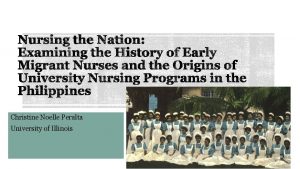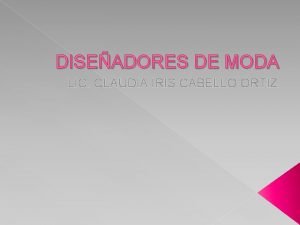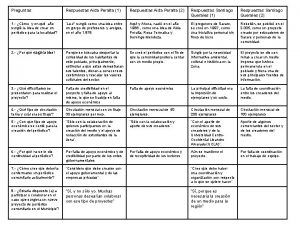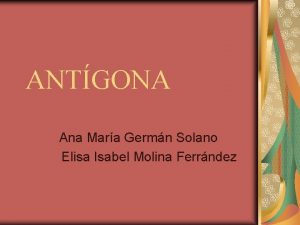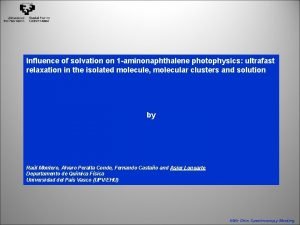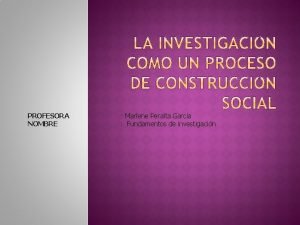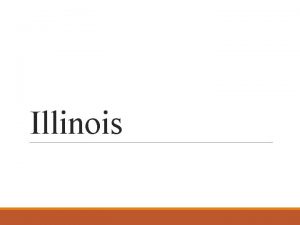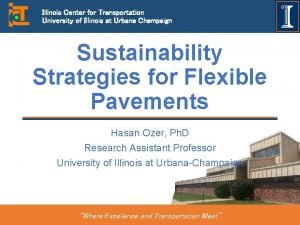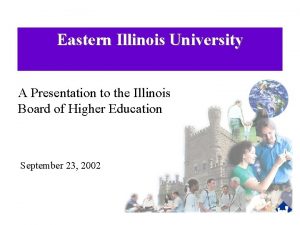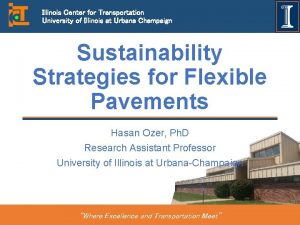Christine Noelle Peralta University of Illinois When the













- Slides: 13

Christine Noelle Peralta University of Illinois

§ “When the Americans came, they immediately set to work to minimize the spread of diseases and to improve the health of the people. ” T. A. Agoncillo and M. C. Guerrero, History of the Filipino People § Nick Joaquin writes, “Our importable nurses of today don’t know it, but their godfather is Victor Heiser. ” (director of U. S. public health in the Philippines) Manila, My Manila § Rudolph Vecoli states “The Filipino nurses…who migrated to the United States surely enjoyed improved life opportunities because of the colonial history Philippines. Is it possible that some good have come from imperialism? ” § “Rendered invisible are the ways that U. S. colonialism in the Philippines created an Americanized training hospital system that eventually prepared Filipino women to work as nurses in the United States as opposed to the Philippines. ” Catherine Ceniza Choy, 2003

§ Rendered invisible are the ways that U. S. colonialism in the Philippines created an Americanized training hospital system that eventually prepared Filipino women to work as nurses in the United States as opposed to the Philippines. ” Catherine Ceniza Choy Step 1) U. S. Knowledge Step 2) Philippines 1907 -1935 Labor U. S. 1945 -1990

Characteristics -Elite to Middle Class -Private and Public Sponsorship of nursing students to go and study and train abroad in the U. S. For example D. A. R. , YWCA, Balfour, Red Cross, the Pensionado Program and the Rockefeller Foundation -Often targeting women from provincial areas who already did internal migration within the Philippines to complete their studies -specialized training in nursing ie. public health and nurse administration -Expectation for the Sponsor and the Philippine government was that the talent would migrate back -Nation Builders- Imagined as part of the legacy with the illustrados


§ Rendered invisible are the ways that U. S. colonialism in the Philippines created an Americanized training hospital system that eventually prepared Filipino women to work as nurses in the United States as opposed to the Philippines. ” Catherine Ceniza Choy A) U. S. Knowledge B) Philippines 1898 -1935 Labor U. S. 1945 -1990

§ Hawaii Sugar Plantation Association– Sponsors Filipino Nurses 1918 -1931 § In 1929 Red Cross and the Rockefeller Foundation Sends Thai Nurses to Train at the Philippine General Hospital § Chinese General Hospital hires Philippine General Hospital Nurse Praxedes Co Tui as Chief Nurse and Principal in 1921 § Rockefeller Foundation Sponsors Nurses to train and study abroad in the U. S. , Canada, and Puerto Rico (1921 -1947)



-RF Fellows Julieta Sotejo and Leonor Malay – Were asked to do ward duty at the Yale Training Hospital changing the expectations of the fellowship where Sotejo was supposed to undergo advance training in nurse administration and public health nursing. -Ines Cayaban - Filipino nurse, received a fellowship from the Daughters of the American Revolution to pursue graduate training at the University of Chicago. However, the stipulations of the award were altered from a fellowship to a work study in which she earned her room and board for school by being a full-time nanny to a widower’s son. (Cathy Choy) HSPA Nurses- Salaries were reduced in violation of their contracts (1925)

Dependencies Influences On the U. S. It is rather an interesting commentary that the health work of the United States for its dependencies has been more thorough and advanced than that done at home. Much of the stimulus for better sanitation in the United States has come from Panama and the Philippines. The demonstrations in disease control have been so convincing that emulation has resulted here. The fruits of malaria control long since enjoyed abroad have only recently been introduced in our own Southern States. (Victor Heiser, 1923) “inclusionary racial formation. ” This is the belief that colonized subjects would one day prove they were ready for self-rule, but required American tutelage and supervision. Therefore, while this tutelage was in effect, it rationalized inferior treatment and the nurse faculty’s demand for menial care work. Catherine Ceniza Choy, “Nurses Across Borders: Foregrounding International Migration in the Nursing History, ” Nursing History Review 18 (2010): 20.


